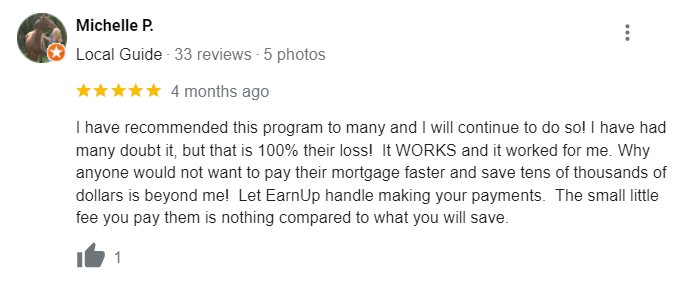In the mortgage world, loan data is king. It’s all about using data set information wisely to grow your business. This means understanding which data points matter most for successful cross-selling and client relationships.
In this post, we will explore how specific loan data insights can inform your outreach, boost client retention, and ultimately increase revenue.
Using Loan Data for Strategic Cross-Selling
Loan data offers insights you can leverage throughout a loan’s lifespan, ensuring no opportunity slips through the cracks. At the start of a loan, you can help clients access financial products. Strategically offering refinance options midway through a loan term can also benefit clients.
Debt-to-Income Ratio (DTI)
The Debt-to-Income (DTI) ratio is a crucial metric that lenders use to assess a borrower’s financial health. It represents the percentage of a borrower’s monthly gross income that goes toward paying off debts.
How is DTI Calculated?
To calculate the DTI ratio, lenders add up the borrower’s monthly debt payments, including:
- Minimum credit card payments
- Car loan or lease payments
- Student loan payments
- Mortgage payments (including property taxes and insurance)
- Alimony or child support payments
- Any other debt obligations
Then, they divide the total debt payments by the borrower’s monthly gross income. The result is expressed as a percentage.
Impact on Loan Qualification
The DTI ratio has a significant impact on loan qualification. Lenders use it to determine how much credit to extend to a borrower and at what interest rate. A high DTI ratio indicates that a borrower may be over-extended and may struggle to repay debts. On the other hand, a low DTI ratio suggests that a borrower has a healthy financial situation and may be eligible for better loan terms.
Low DTI Ratio: A Chance for a Home Equity Line of Credit (HELOC)?
If a borrower has a low DTI ratio, it may present an opportunity to suggest a Home Equity Line of Credit (HELOC). A HELOC allows homeowners to tap into the equity in their home and use it to finance other expenses, such as home renovations or consolidating debt. With a low DTI ratio, a borrower may be eligible for a HELOC with a more favorable interest rate and terms.
In summary, the DTI ratio is a critical metric that lenders use to evaluate a borrower’s financial health. A low DTI ratio can open up opportunities for better loan options, such as a HELOC, while a high DTI ratio may limit borrowing capacity.
Loan-to-Value Ratio (LTV)
The Loan-to-Value (LTV) ratio is a crucial metric in mortgage financing that compares a home’s current market value to the outstanding mortgage debt. This ratio provides valuable insights for lenders, borrowers, and financial advisors, helping them make informed decisions about mortgage refinancing, cash-out opportunities, and loan modifications.
How is LTV Calculated?
To calculate the LTV ratio, you’ll need to know the current market value of the property and the outstanding mortgage balance. The formula is:
LTV Ratio = (Outstanding Mortgage Balance ÷ Current Market Value) × 100
For example, if the current market value of a home is $300,000 and the outstanding mortgage balance is $200,000, the LTV ratio would be:
LTV Ratio = ($200,000 ÷ $300,000) × 100 = 66.67%
Identifying Cash-Out Refinancing Opportunities
The LTV ratio is a key indicator of cash-out refinancing opportunities. When the LTV ratio is low, it may be possible to tap into the equity in the home and extract cash through a cash-out refinance. This can be beneficial for homeowners who need funds for renovations, debt consolidation, or other expenses.
For instance, if the LTV ratio is 60% or lower, it may be possible to refinance the mortgage and take out a significant amount of cash while still maintaining a manageable mortgage payment.
Impact of Changing LTVs on Client Payments
Changes in the LTV ratio can have a significant impact on client payments. If the LTV ratio increases due to a decline in property value or an increase in mortgage debt, the borrower’s monthly payments may increase. Conversely, if the LTV ratio decreases due to an increase in property value or a decrease in mortgage debt, the borrower’s monthly payments may decrease.
Financial advisors and lenders must carefully monitor changes in the LTV ratio to ensure that clients are aware of the potential implications on their mortgage payments and overall financial situation.
In summary, the LTV ratio is a vital metric in mortgage financing that provides insights into cash-out refinancing opportunities and the potential impact of changes in property value and mortgage debt on client payments. By understanding the LTV ratio, financial advisors and lenders can help clients make informed decisions about their mortgage options and overall financial strategy.
Leveraging Debt Data to Identify Cross-Selling Opportunities
In today’s digital age, lenders have access to a wealth of data on a borrower’s debt obligations through payment platforms (like Life of Loan Auto Pay) and credit reports. By analyzing this data, lenders can identify opportunities to cross-sell relevant loan products to borrowers who are already in the market for them.
Identifying Debt Patterns and Trends
By examining a borrower’s debt profile, lenders can identify patterns and trends that indicate a potential need for additional loan products. For example:
- Credit card debt consolidation: If a borrower has multiple credit cards with high balances and high interest rates, they may be in the market for a debt consolidation loan or balance transfer credit card.
- Auto loan refinancing: If a borrower has an auto loan with a high interest rate and a long repayment term, they may be interested in refinancing to a lower-rate loan.
- Student loan refinancing: If a borrower has multiple student loans with high interest rates and variable repayment terms, they may be in the market for a student loan refinancing product.
- Home equity loan or line of credit: If a borrower has a significant amount of equity in their home and is carrying high-interest debt, they may be interested in a home equity loan or line of credit.
Targeted Marketing and Cross-Selling
By analyzing debt data, lenders can create targeted marketing campaigns and cross-selling strategies to reach borrowers who are most likely to be in the market for specific loan products. This can include:
- Personalized email campaigns: Lenders can send targeted email campaigns to borrowers who have demonstrated a need for a particular loan product, highlighting the benefits and features of their offerings.
- Online advertising: Lenders can use online advertising platforms to target borrowers who have searched for specific loan products or have visited websites related to debt consolidation or refinancing.
- In-branch promotions: Lenders can promote relevant loan products to borrowers who visit their branches, highlighting the benefits of consolidating debt or refinancing to a lower-rate loan.
Enhancing Customer Relationships and Revenue Streams
By leveraging debt data to identify cross-selling opportunities, lenders can enhance customer relationships, increase revenue streams, and provide borrowers with a more comprehensive suite of financial products and services. This can lead to increased customer loyalty, retention, and ultimately, revenue growth.
In summary, lenders can use debt data to identify patterns and trends that indicate a borrower’s need for specific loan products. By creating targeted marketing campaigns and cross-selling strategies, lenders can increase revenue streams, enhance customer relationships, and provide borrowers with a more comprehensive suite of financial products and services.
Unlocking the Power of Ongoing Engagement with Life of Loan Auto Pay
Building trust with borrowers requires more than just a one-time transaction. It demands ongoing engagement and a deep understanding of their evolving financial needs. Life of Loan Auto Pay is a powerful tool that enables lenders to gather valuable borrower data, fostering a long-term relationship and identifying opportunities to cross-sell relevant loan products.
Benefits of Life of Loan Data
Life of Loan Data provides lenders with a unique window into the borrower’s financial life, allowing them to:
- Track changes in financial circumstances: As borrowers’ financial lives change, their loan data reflects these changes. Consistent engagement using this data ensures lenders understand these shifts, such as rising home prices or improved credit profiles.
- Identify cross-selling opportunities: By monitoring borrower data, lenders can identify opportunities to offer relevant loan products, such as refinancing or debt consolidation, at the right time.
- Enhance customer retention: Regular check-ins and access to Life of Loan Data help lenders build strong relationships with borrowers, increasing the likelihood of retention and reducing the risk of customers leaving for marginally better offers elsewhere.
Recapturing Borrowers with Monthly Check-Ins
Monthly check-ins using Life of Loan Auto Pay remind customers of the lender’s availability and expertise, positioning them as a trusted advisor in their financial lives. When a borrower’s credit profile improves, they are more likely to return to the lender for future loan needs, increasing the opportunity for cross-selling and retention.
Benefits for Lenders
By leveraging Life of Loan Auto Pay, lenders can:
- Strengthen their competitive position: Retaining customers reduces the risk of losing them to competitors, allowing lenders to maintain a strong market presence.
- Reduce unnecessary fees: Avoiding the need to switch servicers or lenders eliminates unnecessary fees, saving lenders time and resources.
- Enhance customer relationships: Ongoing engagement and access to Life of Loan data foster trust and loyalty, leading to long-term relationships and increased revenue streams.
In summary, Life of Loan Auto Pay is a powerful tool that enables lenders to gather valuable borrower data, identify cross-selling opportunities, and enhance customer retention. By leveraging this data, lenders can build strong relationships, reduce unnecessary fees, and strengthen their competitive position in the market.
FAQs about Loan Data
What is the meaning of loan data?
Loan data details records of existing loans and credit accounts, such as balances, terms, and payment history. It also shows the total limit on credit cards and payments made. Loan data comprises a history of credit and debt.
This information includes loan details like balance and terms of loans, due dates of payments, and your payment history. Loan data indicates a borrower’s financial habits over time. Loan data is not just a static snapshot but rather provides month-by-month tracking, from the beginning of the loan until present day. This detailed monthly account of changes will be key in cross-selling to serve the customers unique needs.
What is the data loan?
Loan data reveals patterns in loan repayment behavior from real loan records. It gives mortgage lenders insights into their clients’ credit habits and cross-selling opportunities.
How can lenders leverage the Debt-to-Income (DTI) ratio?
The DTI ratio is a crucial metric for assessing borrowers’ financial health. Lenders can use it to:
- Determine credit extension amounts and interest rates
- Identify opportunities for offering HELOCs to borrowers with low DTI ratios
- Evaluate overall loan qualification and risk assessment
What insights does the Loan-to-Value (LTV) ratio provide?
The LTV ratio offers valuable information for lenders:
- Helps identify cash-out refinancing opportunities
- Indicates potential changes in borrower payments due to property value fluctuations
- Guides decisions on mortgage refinancing and loan modifications
How can lenders use debt data for cross-selling?
Analyzing debt data allows lenders to:
- Identify patterns indicating needs for specific loan products (e.g., debt consolidation, auto loan refinancing)
- Create targeted marketing campaigns based on borrowers’ financial profiles
- Enhance customer relationships and increase revenue through personalized offerings
What benefits does Life of Loan Auto Pay offer lenders?
Life of Loan Auto Pay provides lenders with ongoing engagement opportunities:
- Tracks changes in borrowers’ financial circumstances
- Enables timely identification of cross-selling opportunities
- Enhances customer retention through regular check-ins
- Strengthens competitive position by reducing the risk of losing customers to competitors
Conclusion
Loan data is crucial for building relationships, encouraging loyalty, and driving revenue. Looking beyond credit scores provides valuable information.
Smart lenders proactively engage with customers, building trust and fostering long-term relationships. This approach builds customer lifetime value, which is more valuable than one-time transactions.
Using data insights to adapt to customers’ changing financial situations ensures both customer value and revenue growth for lenders.









